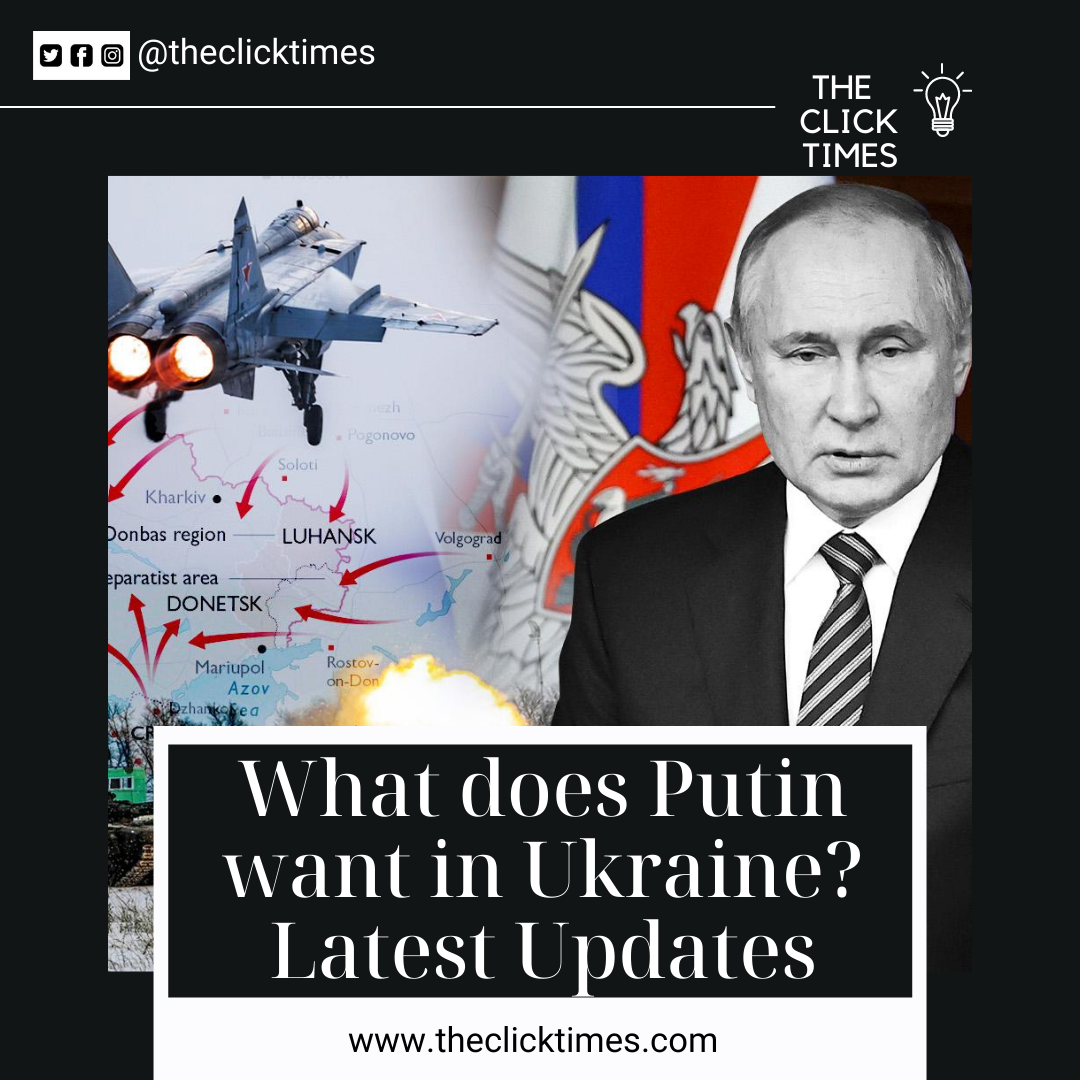The Click Times: By air, land and sea, Russia launched a devastating attack on Ukraine, a European democracy of 44 million people. President Vladimir Putin denied for months that he would invade his neighbor, but then he ripped up a peace deal and send the forces across over the borders in north, east and southern Ukraine.
As the death toll mounts, he is now accused of destroying peace in Europe and what happens next could endanger the continent’s entire security system.
Roots of Ukraine and Russia War: How The Crisis Spread
Here’s a guide to the causes behind a conflict that has just turned into a major military confrontation, and what’s at stake for Russia, the US, and NATO.
For the past few weeks it has felt like a Cold War scene, a dangerous episode from a bygone era. An unpredictable Russian leader massed troops and tanks on a neighbor’s border. A bloody conflagration was feared in east-west.
Then the Cold War got hot. : Vladimir Putin has sent his troops across the border into Ukraine, with immediate and far-reaching consequences.
In the days leading up to the invasion, even as Russian forces reached an estimated strength of 190,000 and formed a pincer around Ukrainian territory, and even as the United States warned in increasingly grim tones that a military attack seemed inevitable, there was hope. Volodymyr Zelenskyy, the President of Ukraine, stuck to his optimistic message. Mr Putin claimed he was open to diplomacy, and European leaders worked desperately to get the Kremlin to back down.
Then just before 6 a.m. Thursday, the Russian president declared before his nation the start of a “special military operation” in Ukraine. The goal is to “demilitarize” the country, but not to occupy it.
Minutes later, large explosions were seen near Kharkiv, Ukraine’s second largest city, and explosions were reported in Kiev, the capital, as well as other parts of the country. And soon the Ukrainian Ministry of Internal Affairs reported that Russian troops had landed in Odessa and were crossing the border.
The invasion threatens to destabilize the already unstable post-Soviet region, with dire consequences for the security structure that has governed Europe since the 1990s. Putin has long mourned the loss of Ukraine and other republics as the Soviet Union disintegrated, but the demise of NATO, the military alliance that helped keep the Soviets in check, may be their true mission.
Before the invasion, Russia put forward a list of far-reaching demands for the transformation of this structure, positions rejected by NATO and the United States.
What is behind the crisis of Ukraine?
After the collapse of the Soviet Union, NATO expanded eastward, eventually including most of the European nations that had been in the communist sphere. The Baltic republics of Lithuania, Latvia and Estonia, once part of the Soviet Union, joined NATO, as did Poland, Romania and others.
As a result, NATO moved hundreds of kilometers closer to Moscow and directly bordered Russia.
Putin described the Soviet disintegration as a catastrophe that stripped Russia of its rightful place among the world’s great powers and left it at the mercy of a predatory West. He spent his 22 years in power rebuilding Russia’s military and asserting his geopolitical influence.
The Russian President describes the NATO expansion as a threat and the possible accession of Ukraine as a major threat to his country. The more self-confident and militarily stronger Russia has become, the louder its complaints about NATO have become. He has repeatedly raised the specter of American ballistic warfare. Missiles and combat troops in Ukraine, although US, Ukrainian and NATO officials insist there are none.
Putin has also insisted that Ukraine and Belarus are fundamentally parts of Russia culturally and historically. He has considerable influence in Belarus, and reunification with Russia has been discussed for years.
But East-West relations deteriorated drastically in early 2014 when mass protests in Ukraine forced a president closely allied with Mr Putin. Russia quickly invaded and annexed Crimea, which is part of Ukraine.Moscow also promoted a separatist rebellion, which took control from the Donbas region of Ukraine, in an even strong war, who has killed more than 13,000 people.
What does Putin want?
Mr Putin appears determined to turn back the clock more than 30 years and establish a vast Russian-dominated security zone resembling the power Moscow wielded in Soviet times. Now, at 69 and possibly at the end of his political career, he clearly wants to draw Ukraine, a nation of 44 million people, back into Russia’s sphere of influence.
Russia presented NATO and the United States with a series of written requirements in December that it said were necessary to ensure its security. Chief among them is a guarantee that Ukraine would never join NATO, that NATO would withdraw its forces from the Eastern European countries that have already joined, and that the 2015 ceasefire would be implemented in Ukraine even if Moscow and Kiev did not agree agree on what that would mean.
The West flatly rejected the main demands, but made proposals on other issues and threatened sanctions. Moscow’s aggressive stance has also fueled Ukrainian nationalism, with citizen militias preparing for a protracted guerrilla campaign in the event of a Russian occupation.
Putin’s timing may also be related to the transition from President Donald J. Trump, who was remarkably friendly to him and despised NATO, to President Biden, who was committed to the alliance and distrusted the Kremlin.
He may also wish to bolster nationalists at home by focusing on an external threat, as he has done in the past. Putin has quashed internal challenges to his authority, but over the past year, as the economy faltered and the pandemic raged, opposition groups held some of the largest anti-Putin protests in years.
Follow The Click Times on Medium.
Also, read Russian Military in Ukraine.
Tags: What does Putin want in Ukraine, russia attacks ukraine latest news, russia ukraine war reason, russia ukraine crisis explained

